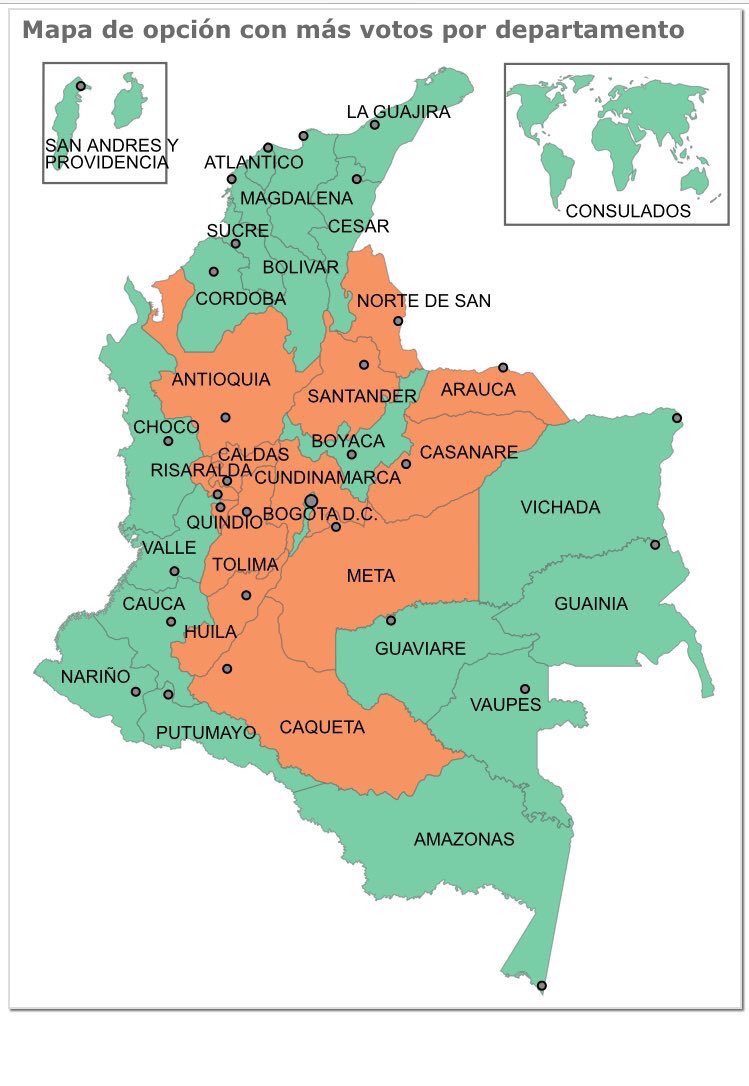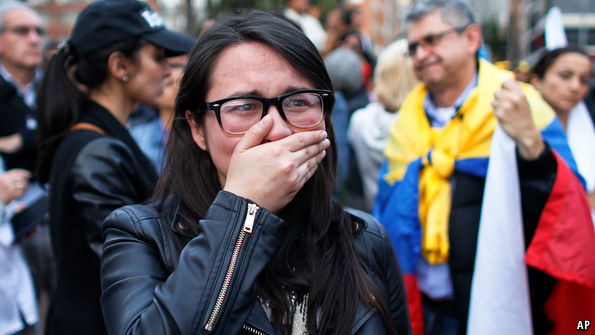The Colombian Public Rejects Peace Deal with FARC
I had fully expected to be writing a quick post on the historic end of Colombia’s 52-year-old civil war. Instead, like many others, I am stunned by the rejection of the peace agreement by the Colombian public. As an outsider, it seems unthinkable that people would vote for the continuation of a devastating civil war. Yet, when I was in Colombia last year, I noticed a great deal of negativity towards the negotiations with the FARC. Puzzled, I asked Universidad de los Andes Professor, Angelika Rettberg, why this was the case. She explained that many Colombians were unhappy about the cost of a peace deal; instead, believing that FARC should surrender to military defeat. Like everyone I talked to though, she also thought that acceptance of a peace agreement was inevitable.
Why would people vote for more war? Because they are not the ones paying its cost.
There is a lot of excellent analysis on Colombia – FARC negotiations and the final Peace Agreement. You should read them. In this post, however, I wanted to offer a few quick thoughts based on my experience researching Colombia.

One of the most striking aspects of the vote was the regional divide. The areas that have suffered the most from FARC violence voted overwhelmingly in favor of the peace deal. In contrast, Colombians living in the country’s center, which has seen very little violence in the past decade, voted against the peace deal. This fact contributes to my perception that there are two distinct Colombia’s.
My research, which focuses on business and political elites, is largely concentrated in Bogotá and Colombia’s developed urban areas. This Colombia is modern, internationally oriented, with growing economic prosperity and a widening middle-class. It is difficult for me to reconcile this image and personal experience with a Colombia that has the largest number of displaced people in the world — almost 7 million.

The aid workers I met with described how frequently they had been threatened with or were victims of violence. Continuous fighting between FARC and other armed groups against the Colombian military has prevented the economic development of these regions, as well as the building of crucial infrastructure, including better roads and schools. These areas voted overwhelmingly for the peace agreement. Having borne the highest costs of war, this population has the most to gain from peace.
Too little justice? Victims of FARC voted for Peace.
Voters who did not support the peace deal frequently complained that the deal would let FARC members escape justice. Yet, this Semenaarticle “Las víctimas votaron por el Sí (Victims Voted Yes)” points out that the localities that had seen the worst atrocities were ones that turned in the highest percentage of YES votes. For example, in May 2002, FARC massacred about 79 civilians in a church in Bojayá, Chocó. On Sunday, 96% of this municipality voted Yes. The article provides an entire list of atrocities alongside the breakdown in the votes on the Peace Agreement. Justice might resonate in those areas for which the war, in effect, ended about a decade ago, but the majority of its victims are more interested in securing a safer future. (You can find more detailed statistics at http://plebiscito.registraduria.gov.co/99PL/DPLZZZZZZZZZZZZZZZZZ_L1.htm. Thanks Michael Weintraub for the info!)
Finally, it seems odd to have the public vote on whether or not a civil war will end. When the costs and benefits of the peace agreement are so unevenly distributed, a referendum does not feel like democracy. But this is more than a cautionary tale about the problems of “direct democracy,” because for all too many Colombians there remains a tragic possibility that this war will continue.
Background Reading:
Council on Foreign Relations (CFR)’s backgrounder on Colombia’s Civil Conflict
Colombia Reports places the conflict with FARC within the longer timeframe of Colombian history
Monkey Cage’s (The Washington Post) coverage of Colombia and the FARC
What peace might mean to the 7 million internally displaced Colombians
U.S. Intervention: “Plan Colombia”
Reactions to the Vote:
“A Post-“No” Recovery Requires Quick Action and Realism About What is Achievable”
